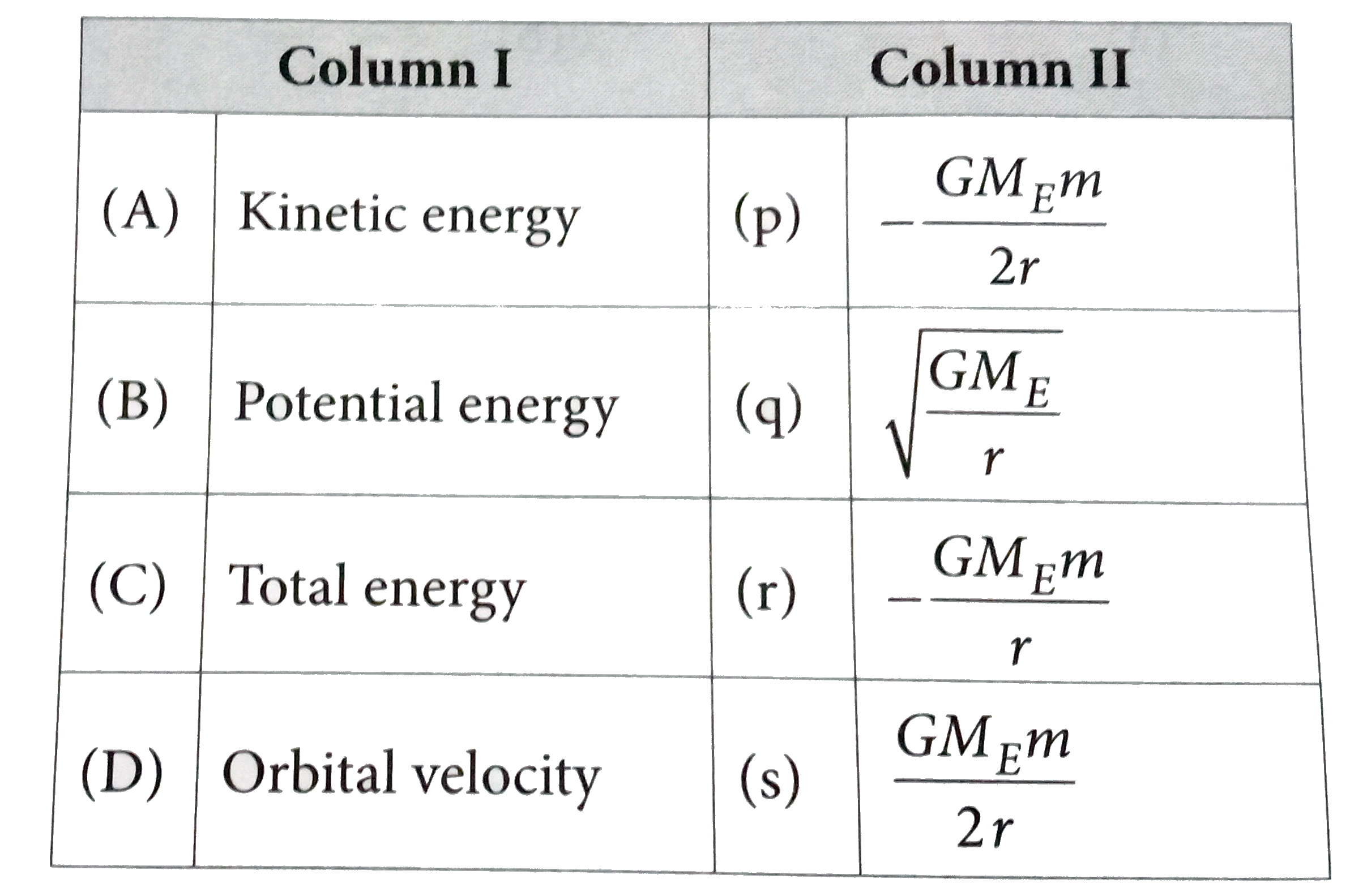A satellite in force free space sweeps stationary interplanetary dust at a rate dmdt=αv where m is mass , V is the velocity of the satellite and α is a constant . What is the decelration of the satellite .
−av2
−av2/2M
−av2/M
−2av2/M
The correct Answer is:C
Step by step video solution for A satellite in force free space sweeps stationary interplanetary dust at a rate (dm)/(dt)= alphav where m is mass , V is the velocity of the satellite and alpha is a constant . What is the decelration of the satellite . by Physics experts to help you in doubts & scoring excellent marks in Class 12 exams.
Updated on:21/07/2023Similar Questions
A satellite in a force - free space sweeps stationary interplanetary dust at a rate dM/dt=αv, where M is the mass , v is the velocity of the satellite and α is a constant. What is the deacceleration of the satellite ?
View SolutionA satellite in force-free sweeps stationary interplanetary dust at a rate of dMdt=αv, where M is mass and v is the speed of satellite and α is a constant. The tangential acceleration of satellite is
View Solution
Knowledge Check
Match the Column I with Column II
For a satellite in circular orbit

(where ME is the mass of the earth , m is the mass of the satellite and r is the radius of the orbit )AA-r, B-s,C-q,D-pBA-q,B-p,C-r,D-sCA-p,B-q,C-s,D-rDA-s,B-r,C-p,D-q
A spaceship in space sweeps stationary interplanetary dust . As a result , its mass increase at a rate dM(t)dt=bv2(t) , where v(t) is its instantaneous velocity . The instantaneous acceleration of the satellite is :
View SolutionForce acting on a particle of mass m moving in straight line varies with the velocity of the particle as F=K/V K is constant then speed of the particle in time t
View SolutionAn artifical satellite of mass m travels at a constant speed in a circular orbit of radius R around Earth (mass M). What is the speed of the satellite ?
View SolutionIf the earth were to spin faster, acceleration due to gravity at the poles :
View SolutionThe satellites when launched from the earth are not given the orbital velocity initially, a multistage rocket propeller carries the spacecraft up to its orbit and during each stage rocket has been fired to increase the velocity to acquire the desired velocity for a particular orbit. The last stage of the rocket brings the satellite in circular/elliptical (desired) orbit.
Consider a satellite of mass 150kg in a low circular orbit. In this orbit, we cannot neglect the effect of air drag. This air opposes the motion of satellite and hence the total mechanical energy of earth-satellite system decreases. That means the total energy becomes more negative and hence the orbital radius decreases which causes the increase in KE When the satellite comes in the low enough orbit, excessive thermal energy generation due to air friction may cause the satellite to burn up. Based on the above information, answer the following questions.
If due to air drag, the orbital radius of the earth decreases from R to R−△R,△R<<R, then the expression for increase in the orbital velocity △v is
View SolutionA satellite of mass m moves along an elliptical path arouned the earth. The areal velocity of the satellite is proportional to
View SolutionA satellite is moving with a constant speed 'V' in a circular orbit about the earth. An object of mass 'm' is ejected from the satellite such that it just escapes form the gravitational pull of the earth. At the tme of its ejection, the kinetic energy of the object is
View Solution
